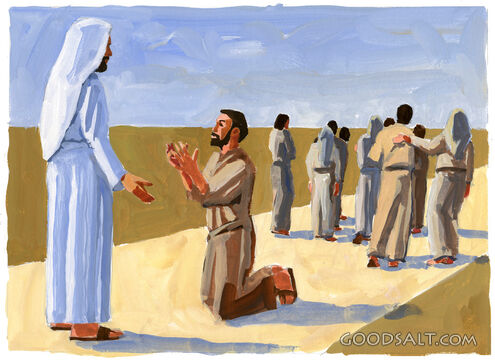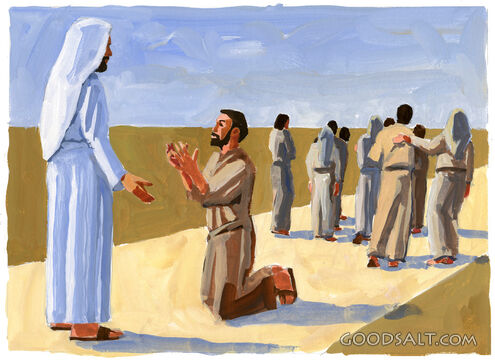
Now on his way to Jerusalem, Jesus traveled along the border between Samaria and Galilee. As he was going into a village, ten men who had leprosy met him. They stood at a distance…(Luke 17:11-12)
As we look at the context for today’s passage, we find that Jesus was traveling through a region usually avoided by Jews, due to their disdain for Samaritans. This sets the stage for a significant event that underscores themes of inclusivity, love, and redemption. This is because Jesus encounters ten lepers, who are not only suffering from a physical ailment but also spiritual and societal isolation.
As we reflect on this interaction, it goes beyond mere physical healing, but it symbolizes Jesus’ outreach to all humanity afflicted by the ‘leprosy’ of sin. The plight of the lepers reflects the isolation and separation from God caused by sin. This fallen world can be viewed as if we are living in a giant global leper colony.
Realizing this helps us understand the importance of recognizing one’s own spiritual sickness to seek and receive healing from Jesus. This is especially true in a world where physical proximity often masks underlying emotional and spiritual isolation.
…and called out in a loud voice, “Jesus, Master, have pity on us!” When he saw them, he said, “Go, show yourselves to the priests.” And as they went, they were cleansed. (Luke 17:13-14)
As the passage progresses, the lepers’ plea to Jesus for healing. This is emblematic of a broader human predicament. Their request represents the humility and acknowledgment necessary for seeking salvation. This moment signifies a deeper understanding of spiritual needs and acknowledges that true healing, both in physical and spiritual forms, comes through faith in Jesus.
The isolated state of the lepers parallels the pervasive loneliness in modern society, suggesting that spiritual leprosy is comparable to the emotional and social isolation prevalent today. This part of the passage extends the metaphor to loneliness as an incurable disease, highlighting the profound human need for Jesus’s healing and grace.
One of them, when he saw he was healed, came back, praising God in a loud voice. He threw himself at Jesus’ feet and thanked him—and he was a Samaritan. Jesus asked, “Were not all ten cleansed? Where are the other nine? Has no one returned to give praise to God except this foreigner?” Then he said to him, “Rise and go; your faith has made you well.” (Luke 17:17-19)
The passage culminates with a powerful demonstration of gratitude’s transformative power. While all ten lepers are physically healed, only the Samaritan returns to express gratitude, indicating true spiritual healing and salvation for that one.
His act of praise and thanksgiving, more than a mere polite gesture, is a transformative expression of deep appreciation for Jesus’s love and sacrifice. It illustrates that true healing encompasses not only the physical aspect but also a transformation of the heart, marked by genuine gratitude and a changed life. This praise and gratitude is a vivid expression of faith and a testament to the transformative power of Jesus’ love and salvation.
Republished with permission from Blogs.crossmap.com, featuring inspiring Bible verses about Where are the other nine?.
